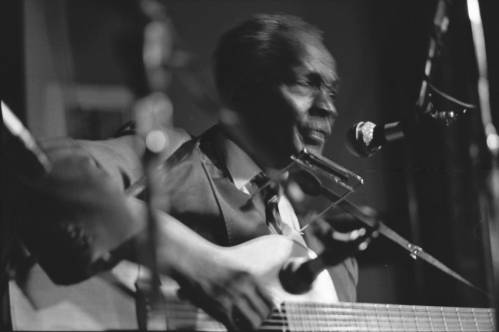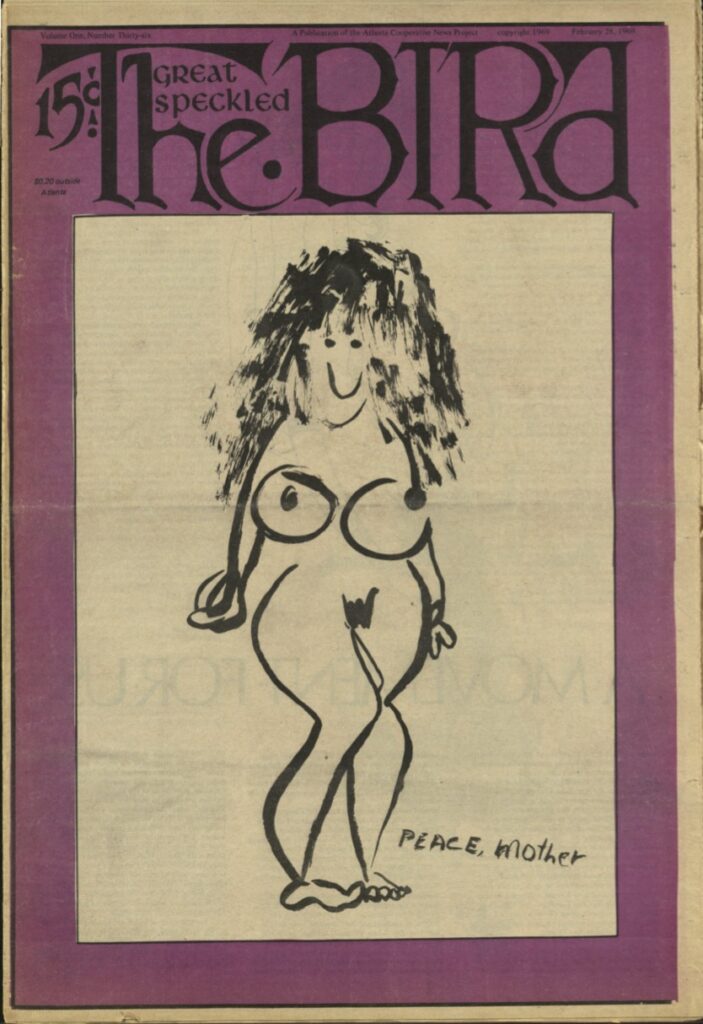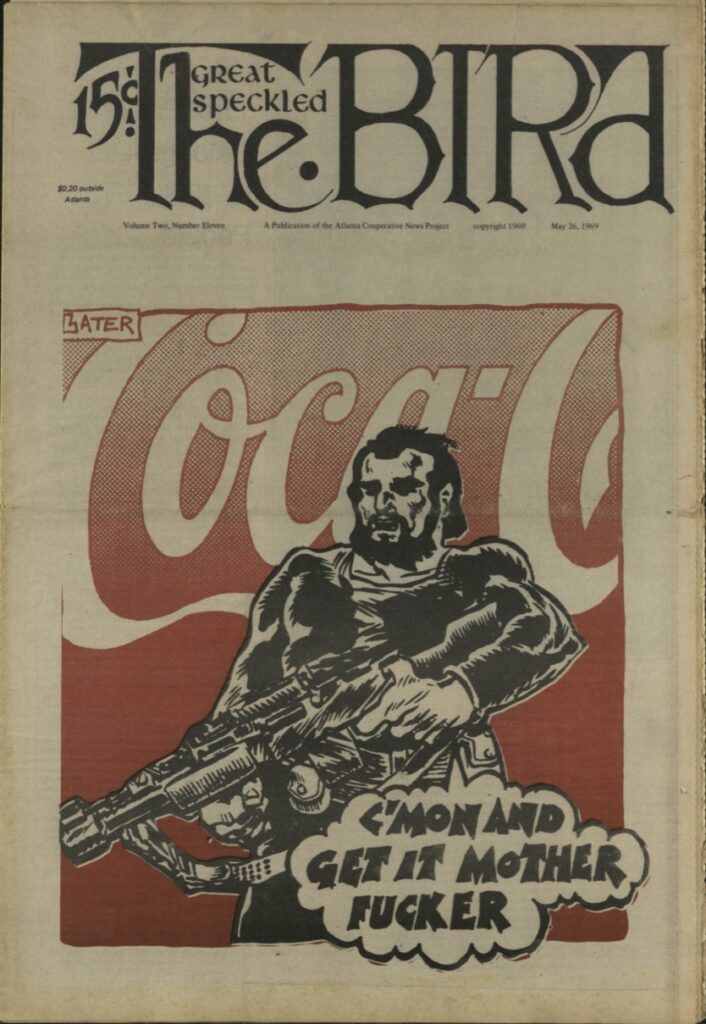Taking Flight
In the summer of 1967, Tom and Stephanie Coffin moved to Atlanta from Washington state so Tom could pursue graduate studies at Emory University. Having been active in the anti-Vietnam War movement in Washington and Oregon, they were surprised at how little activism against the war there was in Atlanta. During the first week of Fall semester, Tom and Stephanie began distributing information against the war at Emory. Within weeks a group of students, civil rights activists, and other like-minded people coalesced and decided to hold a weekly anti-war vigil at Emory and to produce a small broadsheet called the Emory Herald Tribune that would convey information about the war and opposition to it. The vigils attracted hundreds of students and other sympathetic people. Based on this positive response, a core group formed and expanded the Emory Herald Tribune into a booklet format called the Big American Review, which was distributed around the city and region, especially on the campuses of Georgia State University, Agnes Scott College, Emory University at Oxford, Oglethorpe University, and the University of Georgia.
By November, approximately thirty young activists, many with deep experience in the Civil Rights Movement, committed to establishing a multi-campus newspaper. Quickly, the vision expanded to founding an underground newspaper like the scores of others published around the country that focused attention on news and politics neglected by the mainstream press. The paper was formally incorporated as and published by the Atlanta Cooperative News Project, but the paper was named the Great Speckled Bird, a reference to a Biblical passage from the book of Jeremiah as well as to a popular song performed by famous musicians, both black and white, including the Reverend Pearly Brown and Roy Acuff. After establishing an organization structure rooted in collective decision-making and rotating staff positions, and securing an office in an old house at 187 14th Street, the Bird debuted the first issue on 15 March 1968.


